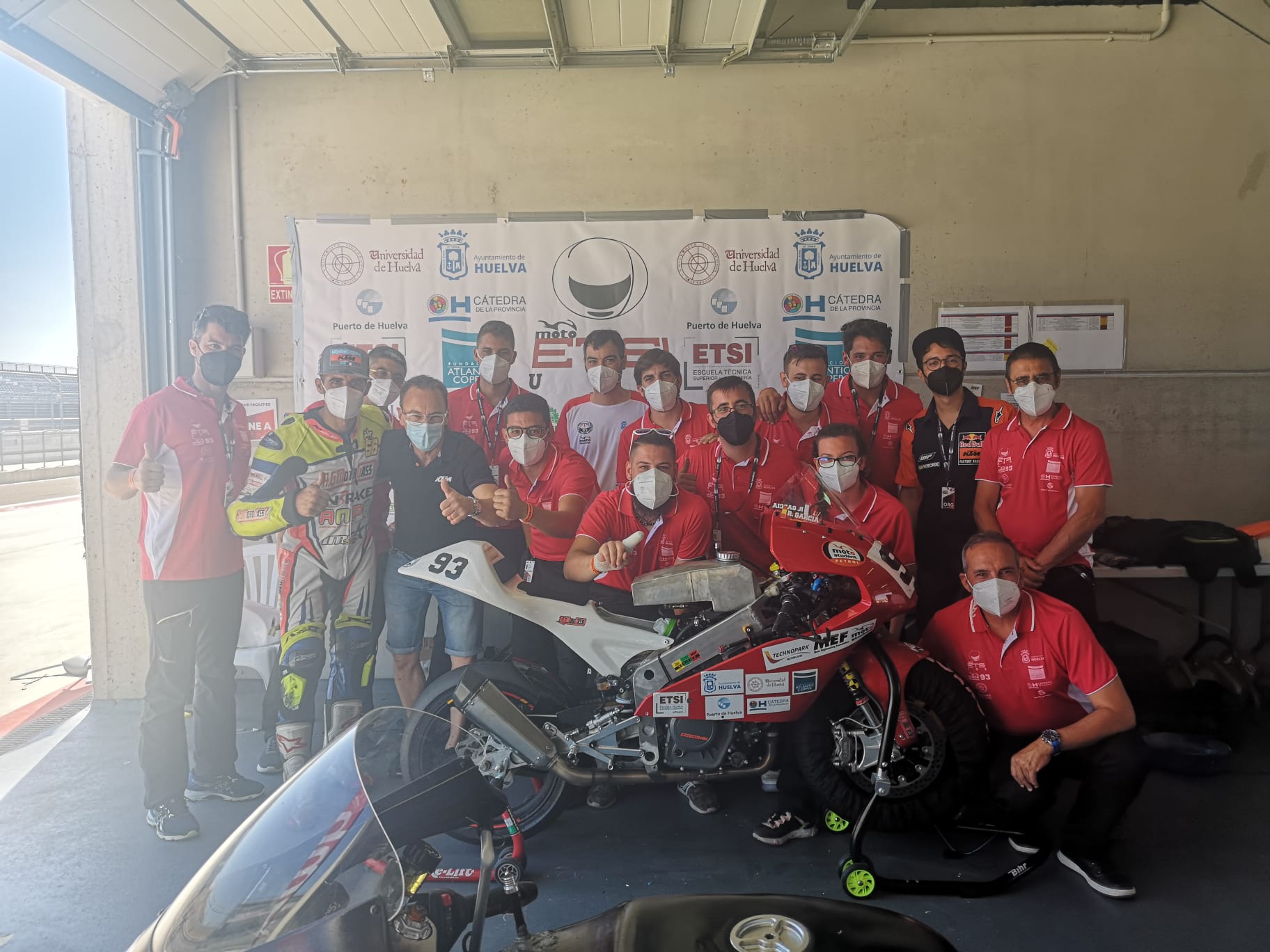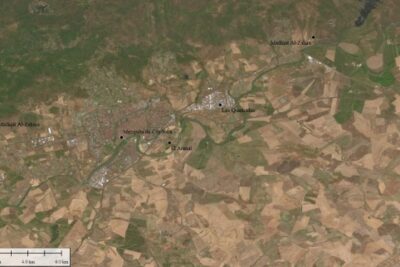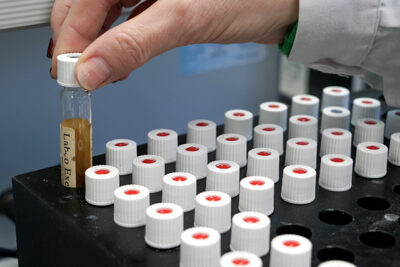Patenting of a motorcycle safety system that stops the engine after detecting the fall of the rider
Researchers at the University of Huelva have designed, built and validated a set of sensors distributed throughout the footrests and saddle that brings the vehicle to a halt when they detect that the motorcyclist is no longer present. This invention automatically halts its operation in the event of any type of incident that may occur to the rider and thereby help to prevent road accidents.
Researchers from the University of Huelva have patented a motorbike safety system that automatically stops the engine when it detects the absence of the rider. Specifically, it consists of three sensors installed at strategic points in the vehicle’s structure: two on the footrests on which the boots rest, and a third on the front part of the saddle.
The aim is to monitor the rider’s status in real time by reading the information sent by these sensors every half a second. Therefore if the rider falls to the ground, the sensors signal this absence following a triple check performed within at least 500 milliseconds to avoid engine cut-offs due to a misinterpretation of the information from the sensors. This prevents the bike from progressing and causing any kind of incident.
These three sensors communicate with each other and instantly display the actual state of the bike and the rider with maximum optimization of the system. «The number of sensors is determined by the possibility that the rider has only one foot placed on one of the two footrests but with the body leaning away from the seat, or with no foot resting but the rider still sitting on the saddle,» explains to Fundación Descubre Juan Carlos Fortes, researcher at the University of Huelva and one of the authors of this patent.
Another variable which made the developers decide to distribute the three sensors throughout the bike is that there may be situations in which you do not have any foot placed on the footrests and you’re not seated for a short space of time. «The rider could be in the air momentarily without necessarily implying the rider has fallen off the motorcycle,» says Fortes.
Infrared and ultrasonic sensors
The experts decided to place the sensors at these three points of the bike in order to ensure the proper functioning of the invention and to get the maximum performance from it. «If, for some reason, the boots are taken off the footrests, the seat sensor detects that the rider is still there. If the system also stopped receiving information from this part of the vehicle, the engine would stop immediately,» Fortes emphasises.
To be precise, the two sensors on the footrests are attached to the chassis and these are infrared sensors due to their greater ability to detect any movements of the rider’s legs. The third sensor is placed parallel to the seat to detect whether the rider is seated. It is ultrasonic and is housed in a small protective casing at the front of the saddle.
Another advantage of both types of sensors is that they can be activated or deactivated as the needs arise at any time. In addition, the time between checks can be extended or reduced, as well as rescheduled. «This makes it possible to adjust these intervals depending on the use given to the vehicle, since a racing bike is not the same as a conventional motorcycle,» the co-author of the patent explains.
To ensure its operation, the system is switched off in its initial state and is activated by a push button, allowing it to be deactivated at any time. This button is connected to a microcontroller located near the handlebars, within quick reach of the rider. «This button must have both the correct size and sturdiness, as riders wear protective gloves and would find it impossible to press a small-sized button,» says Fortes.
In addition to the sensors and the push button, the patented system includes a device that cuts off the power to the engine, just as if the ignition key was turned off. It also has an LCD screen on the front of the bike that allows the rider to check what is happening in the system. «In the event of an error, the rider is instantly aware of this without the need to connect a laptop to the microcontroller,» says Fortes.
Full security
This device not only solves a technical problem, but also ensures the safety of other motorists. «With this system, we prevent damage to the motorcycle structure and at the same time we safeguard the integrity of other drivers or riders on the same road as the riderless motorbike, as happens in competitions,» adds the expert.
Until now, conventional safety systems only stop the engine when the motorcycle is leaning excessively or lying fully on the ground, but do not take into account possibilities such as the rider having suffered a fall and that the bike is still running and continuing in a straight line. «This is a very common occurrence in high-level racing and poses a very serious safety issue for other riders. And it is in these cases that we must consider that something as important as safety should not be governed by a single parameter alone, such as the inclination of the bike, to detect whether the rider has fallen or not,» Fortes stresses.
The newly patented system is integrated into the overall operation of the motorcycle in such a way that it could be coupled with other alternative systems to improve the vehicle’s performance. Currently It does not activate the brakes, but experts are working on this aspect as well.
This invention is part of the ‘Motostudent’ project, a biannual university championship in which groups of engineering students from different universities design, build and test a racing bike.
Spanish version: Patentan un sistema de seguridad para motocicletas que detiene el motor tras detectar la caída del piloto
Últimas publicaciones
El investigador de la Universidad de Córdoba, Antonio Monterroso Checa, ha identificado este yacimiento en la zona relacionada con los cabezos de las Pendolillas, cuyo nombre se conoce desde el siglo XV. Este lugar ha sido desde esa fecha una zona de dehesa ligada al Realengo y sede de las Yeguadas Reales desde tiempos de Felipe II, al igual que sucedió con la ciudad de Abderramán III. Se trata de las dos únicas zonas de Dehesas Reales en Córdoba.
Sigue leyendoEsta investigación del Centro de Investigación Mente, Cerebro y Comportamiento (CIMCYC) de la Universidad de Granada (UGR) revela que apoyar el desarrollo funcional de estos niños y niñas no solo fomenta su independencia, sino que mejora significativamente la calidad de vida de sus padres y madres.
Sigue leyendoEl trabajo ha sido publicado en la revista científica ‘Energy’. De la investigación se desprende que el uso de aguas residuales para producir hidrógeno verde es un proceso sostenible con un gran potencial, puesto que permite ahorrar agua potable, optimizar residuos y contribuir a la disminución del uso de recursos fósiles.
Sigue leyendo






